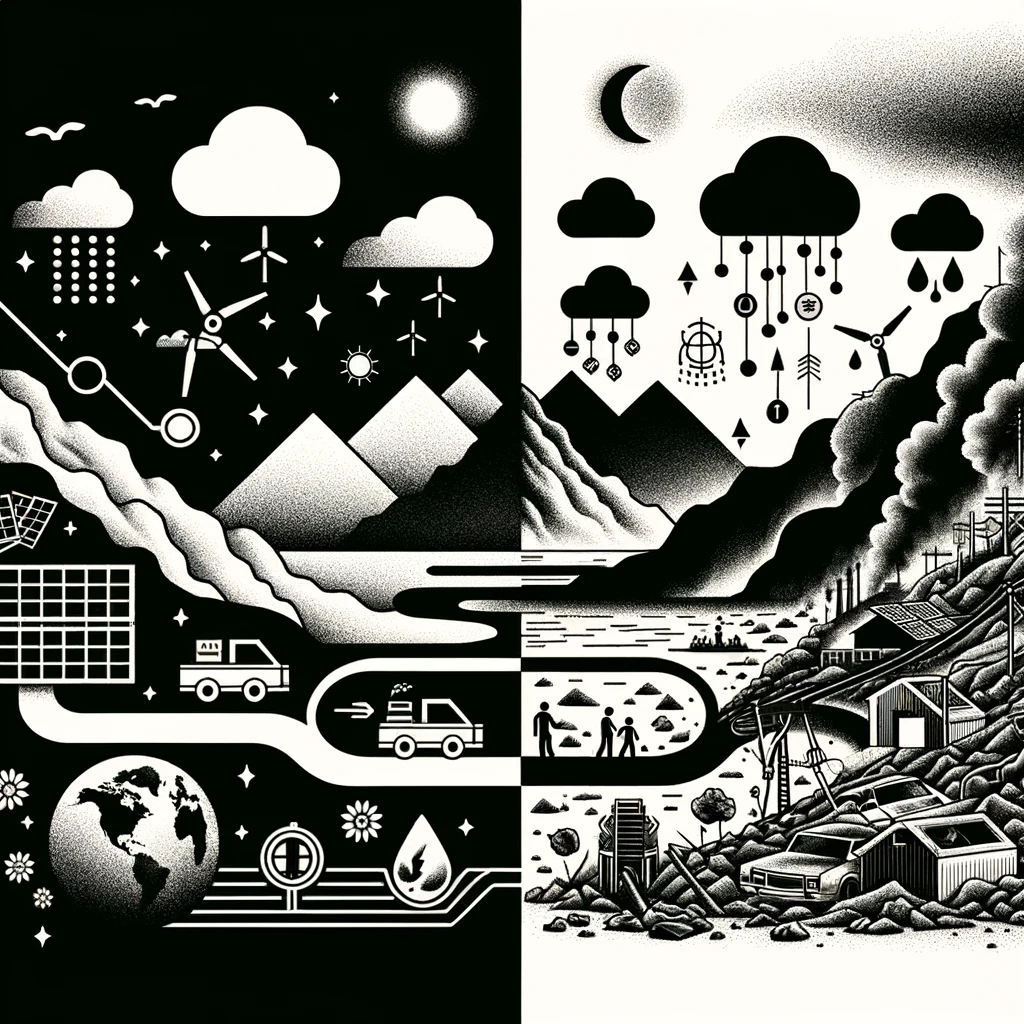The rapid expansion of the electric vehicle (EV) market has spurred a significant increase in demand for lithium, a critical component of EV batteries. This surge in demand has turned South America, particularly the Lithium Triangle region encompassing Argentina, Bolivia, and Chile, into a focal point for lithium extraction. These countries collectively hold approximately 58% of the world’s lithium resources, attracting substantial investments from global carmakers such as Ford, Volkswagen, and China’s Ganfeng Lithium. As these companies seek to secure a steady supply of lithium, the strategic importance of this metal is poised to escalate, intensifying geopolitical competition and investment in the region.
Amid this lithium rush, the emphasis on sustainable mining practices has never been more crucial. Small and medium mining enterprises (SMEs) play a pivotal role in ensuring that lithium extraction does not come at the expense of the environment and local communities. By adopting sustainable practices such as rehabilitating mining sites, using eco-friendly equipment, and fostering community development, these enterprises can mitigate the negative impacts of mining. India stands to gain valuable insights from South America’s pitch for sustainable mining approaches. By learning from these practices, India can push mining responsibly, balancing economic growth with environmental stewardship and social responsibility.
The EV Market Boom and South America’s Lithium Riches
The electric vehicle (EV) market is experiencing a rapid surge, driving an unprecedented demand for lithium, a critical component in EV batteries. This surge has turned South America, particularly the Lithium Triangle—comprising Argentina, Bolivia, and Chile—into a hot spot for lithium extraction. The region holds approximately 58% of the world’s lithium resources, making it a focal point for global carmakers. Companies like Ford, Volkswagen, and China’s Ganfeng Lithium are investing heavily in these areas, keen to secure a steady supply of this vital metal.
Ford recently announced a supply agreement with Chile’s SQM, one of the largest lithium suppliers globally, to meet its EV targets, although Chile’s plans to nationalize its lithium industry add pressure to diversify sources. Ford also signed a non-binding agreement with Lake Resources to deliver 25,000 tonnes of lithium per year from its Kachi project in Argentina, marking a significant move towards direct lithium extraction, considered more environmentally friendly. Meanwhile, Chinese companies like Ganfeng Lithium and Tianqi Lithium are ramping up their investments in the Lithium Triangle. Ganfeng is the majority stakeholder in Argentina’s Caucharí-Olaroz operation, poised to become a top global lithium production site, while Tianqi holds significant shares in Chile’s SQM. These investments underscore the region’s strategic importance in the global EV supply chain.
Chile stands out for its advanced lithium production capabilities, having transformed most of its resources into economically viable reserves. Argentina and Bolivia, however, face challenges such as unfavorable investment climates and difficult geographic conditions. Nevertheless, the strategic importance of lithium will continue to grow, heightening geopolitical competition and investment in the region.

Sustainable Mining Practices for Small and Medium Enterprises
As global attention focuses on South American lithium, the importance of sustainable mining practices becomes paramount. Small and medium mining enterprises (SMEs) can adopt several strategies to ensure their operations are environmentally and socially responsible:
- Shutting Down Illegal Mining: Illegal mining poses significant environmental and social risks. SMEs can work with local communities to raise awareness about the dangers of illegal mining and develop economic alternatives that reduce reliance on illicit activities.
- Rehabilitating Mining Sites: Post-mining land rehabilitation is crucial. Techniques like using biosolids to replenish topsoil and planting vegetation can help restore the land’s productivity and ecological balance. Filling excavated areas with waste rocks also aids in reducing environmental disruption.
- Implementing Eco-Friendly Equipment and Processes: Transitioning to electric-powered machinery and renewable energy sources can significantly cut down on emissions. Water recycling systems and waste recycling equipment further minimize environmental impact and promote sustainability.
- Ensuring Community Prosperity: Mining companies can invest in local communities by developing diverse economic activities and supporting local enterprises. This ensures that communities remain economically viable even after mining operations cease.
- Using Lower-Impact Mining Techniques: Methods like in-situ mining, selective mining, and solution mining reduce environmental harm. These techniques focus on minimizing energy use, water pollution, and habitat degradation.
Lessons for India: Sustainable Mining Practices
India, with its growing EV market, can learn valuable lessons from sustainable mining practices. India’s mines can be efficiently managed by adopting similar sustainable practices. Here are key takeaways for India:
- Adopt Environmentally Friendly Mining Technologies: India can implement eco-friendly machinery and renewable energy sources in its mining operations to reduce environmental footprints.
- Focus on Community Development: Mining companies in India should prioritize the long-term economic well-being of local communities. This can be achieved by fostering diverse economic activities and providing training and support to local enterprises.
- Strengthen Legal Frameworks: To prevent illegal mining, India can enhance its regulatory frameworks and work closely with local communities to address the socio-economic factors that drive illicit activities.
- Invest in Rehabilitation and Reclamation: Post-mining land rehabilitation should be a priority. By adopting successful strategies from around the world, India can ensure that mined lands are restored and made productive again.
Embracing Sustainable Practices for a Greener Future
As the global demand for electric vehicles continues to rise, the spotlight on lithium as a critical resource grows ever brighter. South America’s Lithium Triangle, rich in this essential metal, has become a strategic battleground for international carmakers and investors. While the economic opportunities are immense, the environmental and social responsibilities that come with lithium mining cannot be overlooked. By prioritizing sustainable mining practices, small and medium enterprises in the region can ensure that their operations benefit both the economy and the environment, setting a precedent for responsible resource management.
The plausible cases of implementation of sustainable mining practices in South America offers a blueprint for other regions, including India, to follow. India’s growing markets necessitates the development of its resources, and by adopting strategies such as land rehabilitation, eco-friendly equipment, and community-focused initiatives, India can mitigate the adverse effects of mining. Strengthening legal frameworks to combat illegal mining and investing in local community development will further enhance India’s capacity to manage its lithium resources sustainably.
In conclusion, the global push towards electric vehicles presents both challenges and opportunities. By learning from South America’s experience, India can ensure that its journey towards a greener future is underpinned by sustainable and responsible mining practices. This approach not only safeguards the environment and local communities but also positions India as a leader in the global transition to clean energy. Embracing sustainable practices today will pave the way for a more resilient and eco-friendly tomorrow, benefiting generations to come.


This was a great read. Is there any similar evidence about going paperless and semiconductors for tablets/CPUs etc?
Paperless is the future. ERP systems would get democractic. Many more people would start using them.